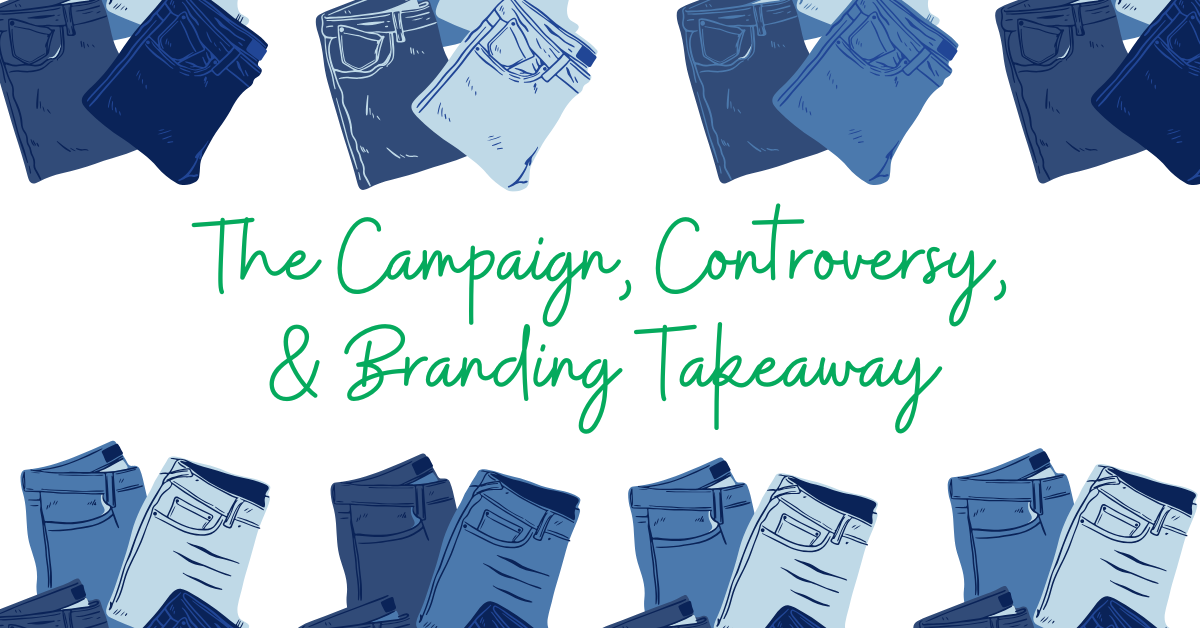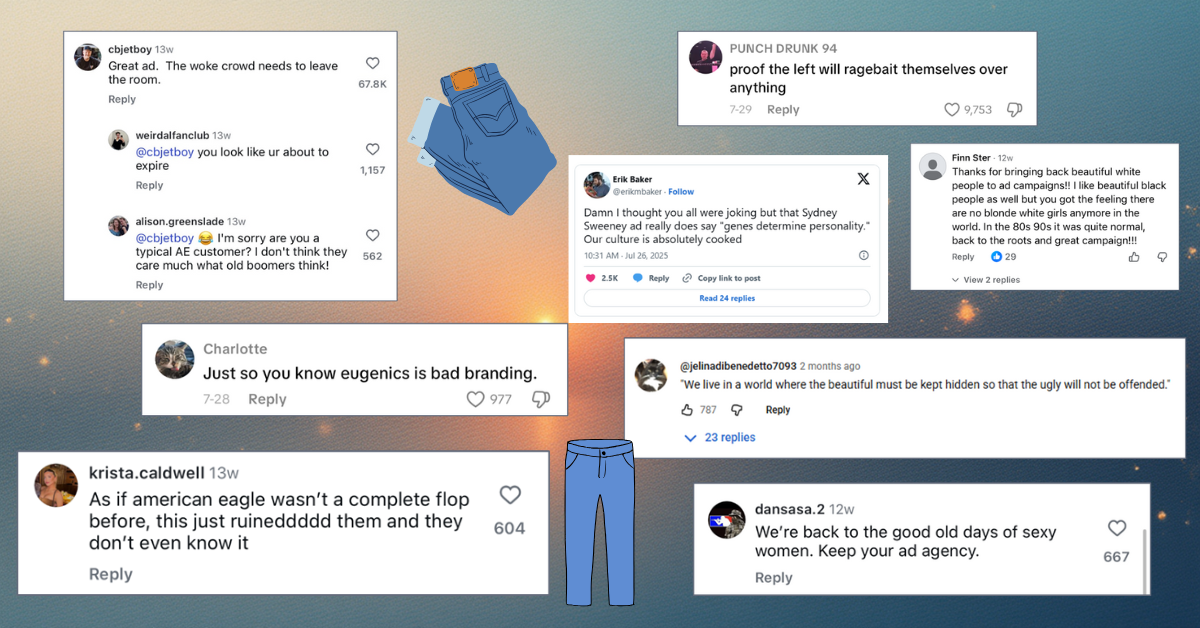
Guest blogger Liz Haworth, VP of Marketing at Michaels Energy
Following my guest Rant last month about Cracker Barrel’s logo makeover and brand backlash, I’m back with another round of marketing mayhem. This time, we’re swapping barrels for blue jeans and biscuits for branding lessons as we dive into American Eagle’s mega-campaign starring Sydney Sweeney.
Just like the Cracker Barrel story, there are lessons here that hit close to home for those of us in the energy world. How we present our brand, signal our values, and evolve our identity all matter – from a pair of jeans to an insert in an energy bill. Let’s dive in!
The Campaign
In July 2025, American Eagle launched its new denim campaign featuring actress Sydney Sweeney with the tagline “Sydney Sweeney Has Great Jeans.” The ad leaned into a wordplay between “jeans” and “genes,” with Sweeney narrating about what gets passed down and how she rocks her blue jeans.
The visuals were unmistakably American Eagle: denim on denim, youth culture, and confidence. The campaign drove huge impressions (about 40 billion, with a B), a spike in new customers (about 800,000 in the quarter), and an increase in brand demand that hit a 20-year high. By any marketer’s standards, the campaign was a WILD success. So, what was the issue?
The Controversy
What started as a cheeky play on words quickly spun into a social media storm. Critics argued that the “genes” reference hinted at genetic privilege and tone-deaf ideals of beauty, particularly since Sweeney is white, blonde, and blue-eyed.
Others took issue with what they saw as echoes of “good genes” language tied to eugenics, and questioned how the campaign had made it through so many layers of approval without anyone raising a flag. As Myles Worthington, CEO of marketing agency Worthi, told Marketing Brew, “It’s so clear that they didn’t have anybody in the room that poked and prodded at this ad”.
To stir things up even more, political heavyweights jumped in, including Trump on Truth Social, who wrote “Sydney Sweeney, a registered Republican, has the HOTTEST ad out there. It’s for American Eagle, and the jeans are flying off the shelves. Go get ’em Sydney. Being WOKE is for losers, being Republican is what you want to be.”
Yikes. That’s not what I would want my brand to be associated with.
Dr. Anastasia Kārkliņa Gabriel, a cultural critic and Forbes contributor, added that “brands simply cannot afford to see their campaigns as apolitical or neutral and need to approach every creative choice with responsibility for ideas that they disseminate to millions of consumers”.
To its credit, American Eagle stood by the campaign. A company spokesperson clarified, “Sydney Sweeney Has Great Jeans is and always was about the jeans. We’ll continue to celebrate how everyone wears their AE jeans with confidence, their way. Great jeans look good on everyone”.
Despite the uproar, American Eagle’s stock jumped nearly 40% after the campaign launched, showing that attention, controversial or not, can move markets.

What Energy Brands Can Learn
In both fashion and energy, how you say something matters as much as what you say. Clever creativity can backfire if it’s not grounded in audience understanding. For energy companies, that means making sure terms like “clean,” “green,” or “smart” don’t alienate or confuse the very customers you’re trying to reach.
Xcel Energy, for example, has done this well with its Responsible by Nature messaging, which frames the clean energy transition around shared values like reliability and community responsibility. It connects with everyday customers without turning the topic into a political lightning rod; a reminder that tone and framing can make all the difference.
Don’t Ignore Legacy Perception
Every brand carries history. Just as American Eagle is rooted in decades of youth culture, utilities and energy programs have their own legacy; often associated with stability, infrastructure, and public trust.
When we at Michaels rebranded from Michaels Engineering to Michaels Energy, it wasn’t about chasing trends. It was about reflecting how our purpose had evolved beyond engineering to include insight, programs, and solutions that save energy and reduce waste.
Representation and Stakeholder Trust
For energy companies, stakeholder trust is everything. Whether it’s a regulator, utility partner, or customer, people want to see themselves represented in your story. That means communicating with authenticity and empathy, not just technical precision.
ComEd, for example, has taken this to heart. Through its Powering Lives resource-fairs and community-based ambassador programs, they went beyond bill-paying talk and showed up in neighborhoods with real people, doing real work alongside customers. The message: “We’re part of this community too.”
Data and Narrative Must Align
American Eagle saw great business metrics even as it navigated a PR firestorm. Numbers tell one part of the story; perception tells the rest. In the energy industry, we track kWh/kW savings and participation rates, but we also need to watch how people feel about our programs, messaging, and values.
Take Risks, But Make Them Purposeful
At Michaels, we introduced Joules the duck to personify our brand and help explain complex topics in an approachable way. It was a risk, but it aligned with our identity.
With American Eagle, the wordplay may have felt clever, but the intent got lost in translation. If you’re going to take a creative leap, make sure it’s grounded in who you are and what you stand for (or be prepared for the backlash).
The Energy Rant Takeaway
Whether you’re selling denim or delivering DSM programs, the fundamentals of branding and trust are the same. The American Eagle and Sydney Sweeney campaign is a case study in how creative ideas can ignite both engagement and controversy.
For those of us in the energy space, the lesson is clear: evolution should always stay connected to authenticity. Bold ideas are great, but the ones that stay true to your purpose and people generate the best kind of energy.
